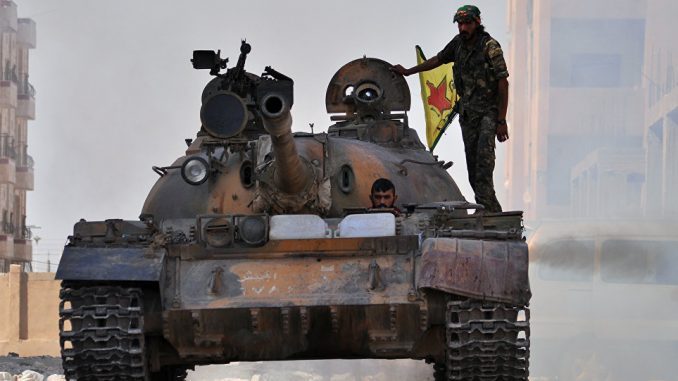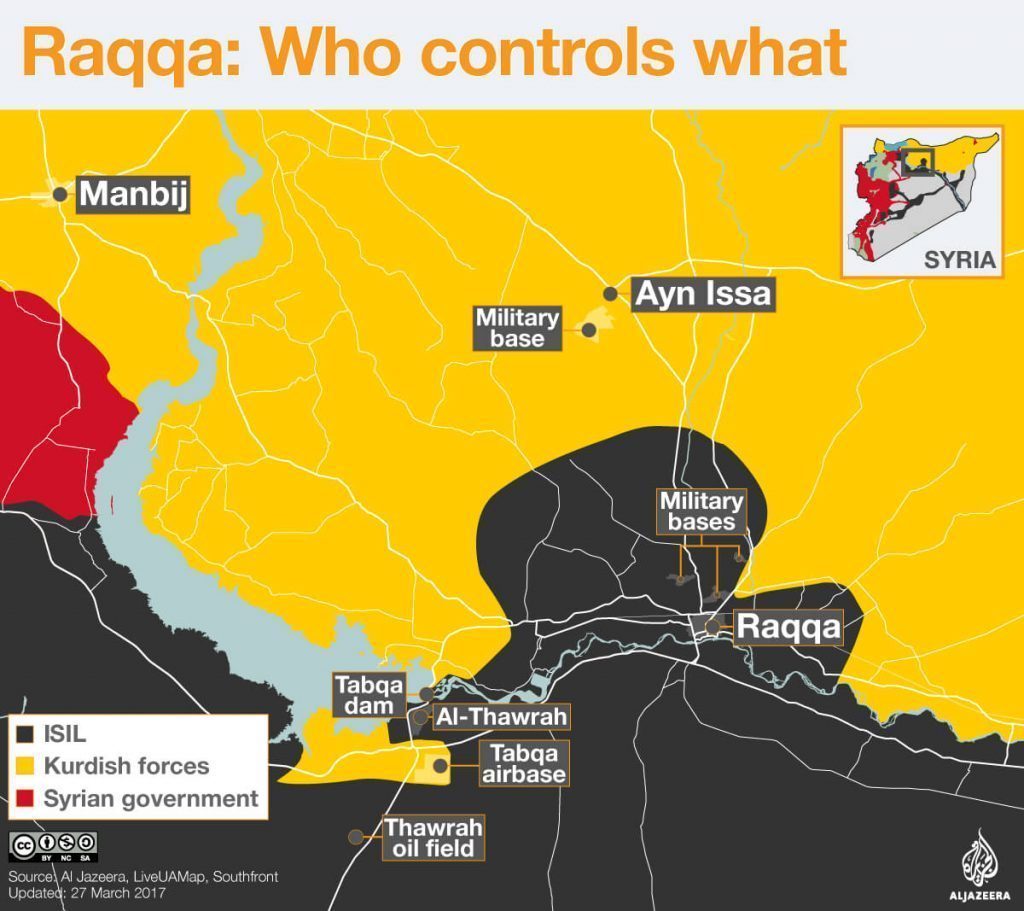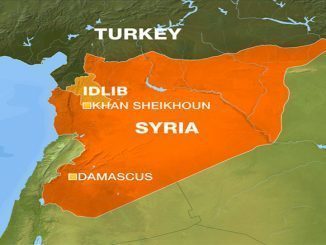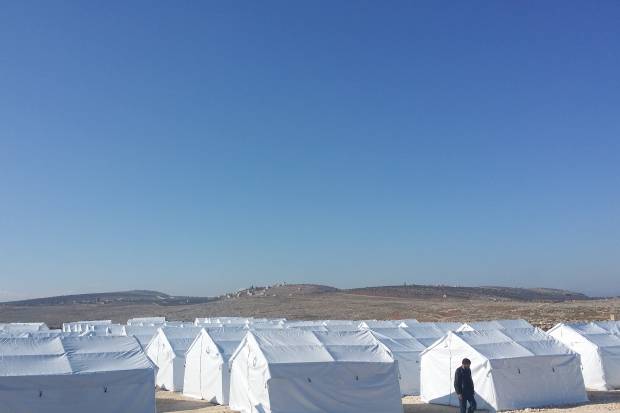
The US-backed Kurdish militias had fierce clashes with Islamic State militants near Syria’s largest dam and in the nearby town of Tabqa, as thousands of civilians have fled the area fearing the clashes and the anticipated collapse of the dam.
At the height of its power two years ago, Islamic State ruled over millions of people in territory running from northern Syria through towns and villages along the Tigris and Euphrates river valleys to the outskirts of Baghdad in Iraq.
However, ISIS’s territory is shrinking rapidly since last year as the US-led coalition, the Turkish-backed forces, and the Russian-backed Assad regime forces have fierce fights against its forces in both Syria and Iraq.
The Syrian Democratic Forces (SDF) alliance, which is dominated by the Kurdish YPG militia, is supported by the US as the latter uses them in its war against ISIS.
Air strikes carried out by the US-led coalition and a long fight by the SDF forces ended in recapturing Manbij from the control of the Islamic State (ISIS) group last year.
The SDF, backed by US coalition, launched also a campaign with the ultimate aim of capturing Raqqa in November and succeeded in encircling the city. Recently, they launched an assault on Deir Ezzor province to cut the road to Raqqa and surrounding ISIS effectively and were able to achieve this goal after fierce clashes.
Now, ISIS is trapped in a shrinking pocket of territory in Raqqa as the SDF forces continue to advance and gain more important locations, preparing for the final Raqqa offensive which is expected to start in April.
Clashes near the dam
The Taqba Dam, also known as the Euphrates Dam, is seen as a prize to push ISIL out of Raqqa, the armed group’s self-proclaimed capital in Syria.
Located about 40km from Raqqa, the dam is the biggest on the Euphrates. It stretches four kilometers across the river and is one of the few land crossings left as many bridges have been destroyed by fighting.
The Kurdish militias said ISIS militants attacked their positions north-east of Tabqa and at an airbase to the south of the town where dozens of their fighters were killed, but the coalition of Kurdish and Arab militias was making slower advances in a village east of the town.
Jehan Sheikh Ahmad, a spokeswoman for the Syrian Democratic Forces (SDF), said the militants were stepping up their resistance as SDF forces got closer to encircling the town and the dam.
“Our forces are advancing…(Islamic State )are facing large difficulties and so they are starting counter-attacks,” said the official whose forces have U.S. special forces with them.
The SDF began an assault to capture the dam and the nearby town almost two weeks ago after the coalition landed some of its fighters on the southern side of the Euphrates near Tabqa, leading to its capture of an air base.
Islamic State and the Syrian government have both said the hydroelectric dam is vulnerable to collapse after strikes by the U.S. led coalition.
Syrian officials say that would lead to catastrophic flooding in the cities and towns in the Euphrates valley downstream.
The director of the Syrian government’s General Authority of Euphrates Dam that formerly operated the huge project blamed U.S. strikes in the last week for disrupting internal control systems and putting the dam out of service, and warned of growing risks that could lead to flooding and future collapses.
ISIS had also issued warnings that the dam could collapse “at any moment”, releasing pictures showing what it said was the structure’s control room after it had been damaged by US air raids.
However, the SDF and the coalition have denied the dam is in danger. Raqqa 24 said engineers employed by the Kurdish militants had restored power to the dam’s gates and the structure was functioning normally.
Thousands of civilians flee
Hundreds of families with their cattle, property, motor bikes and vans continued on Sunday to flee from villages under Islamic State control.
The U.S.-backed forces say at least 7,000 people have taken shelter in their areas since the campaign to capture Tabqa.
Many are also fleeing air strikes on civilian areas in Raqqa province that have left dozens dead according to activists and the British-based Syrian Observatory for Human Rights.
Last month strikes believed to be conducted by the U.S.-led coalition hit a bakery and a local market in Tabqa town with dozens of civilians killed. Another raid that hit a school sheltering displaced people near Raqqa also killed scores.
The UK-based Syrian Observatory for Human Rights, which monitors the war in Syria, said on March 27 that a week-long campaign of U.S-led strikes on Tabqa and the western countryside of Raqqa province had killed at least 90 civilians, a quarter of them children, while injuring dozens.
Earlier in March, the Pentagon said there were no indications a U.S.-led coalition air strike near Raqqa had hit civilians, in response to an Observatory statement that at least 33 people were killed in a strike that hit a school sheltering displaced people near the city.
The air raid early on Tuesday morning was also reported by the activist-run Raqqa is Being Slaughtered Silently group, which said dozens of civilians were dead or still missing after the air raid.
The Syrian National Coalition said in a statement that it was “increasingly concerned” about civilian casualties in the campaign against the extremist group.
The Syrian crisis began as a peaceful demonstration against the injustice in Syria. Assad regime used to fire power and violence against the civilians and led to armed resistance. 450.000 Syrians lost their lives in the past five years according to UN estimates, and more than 12 million have lost their homes.




